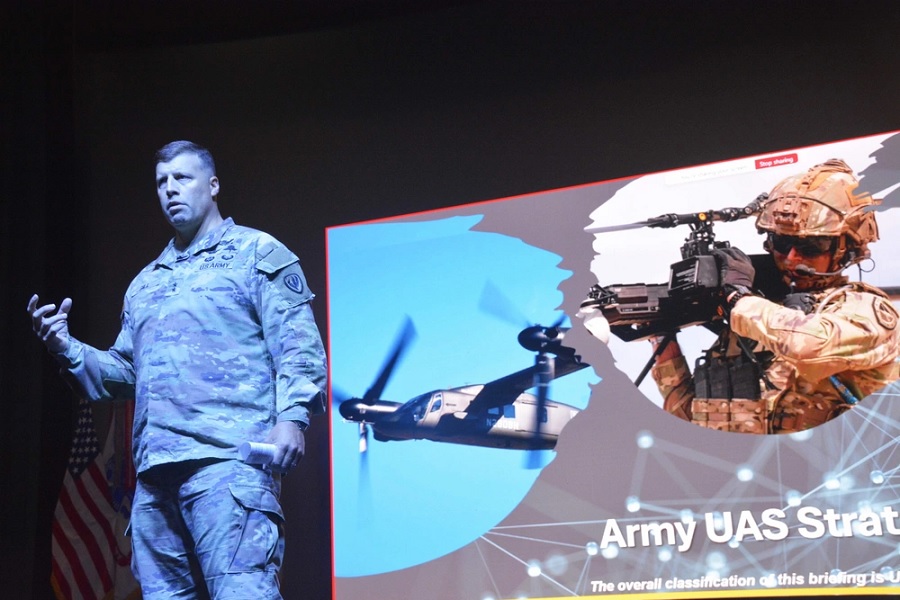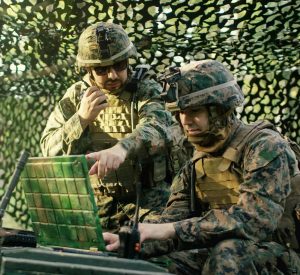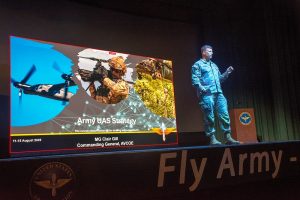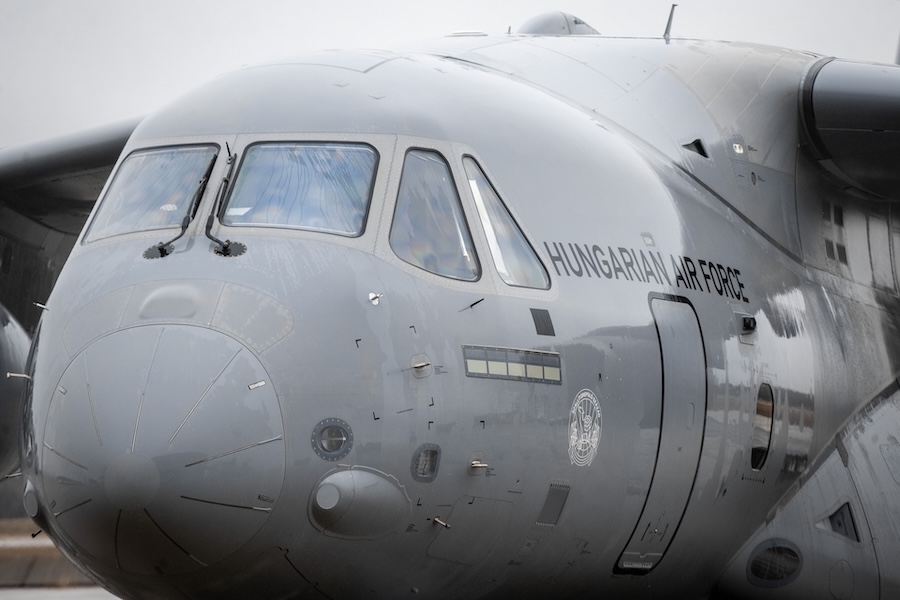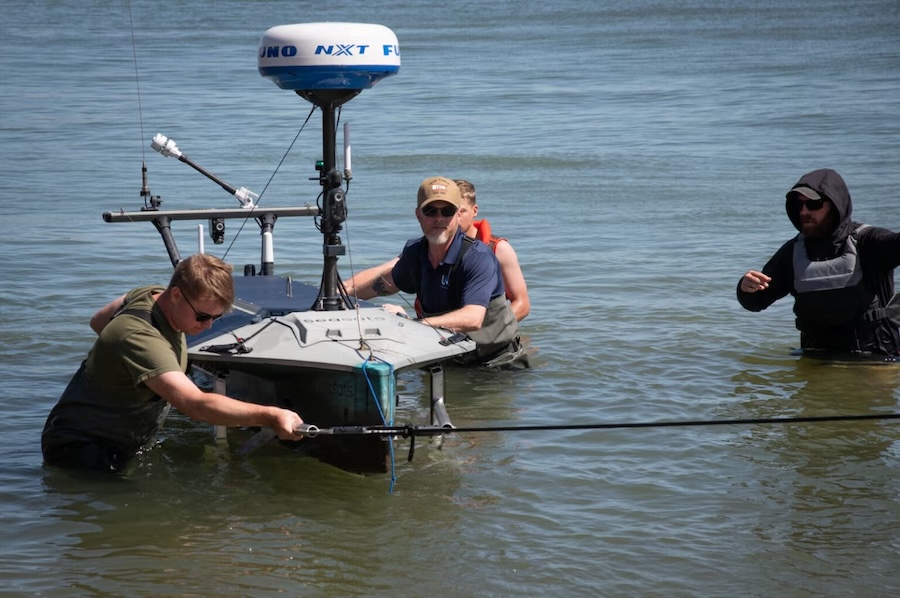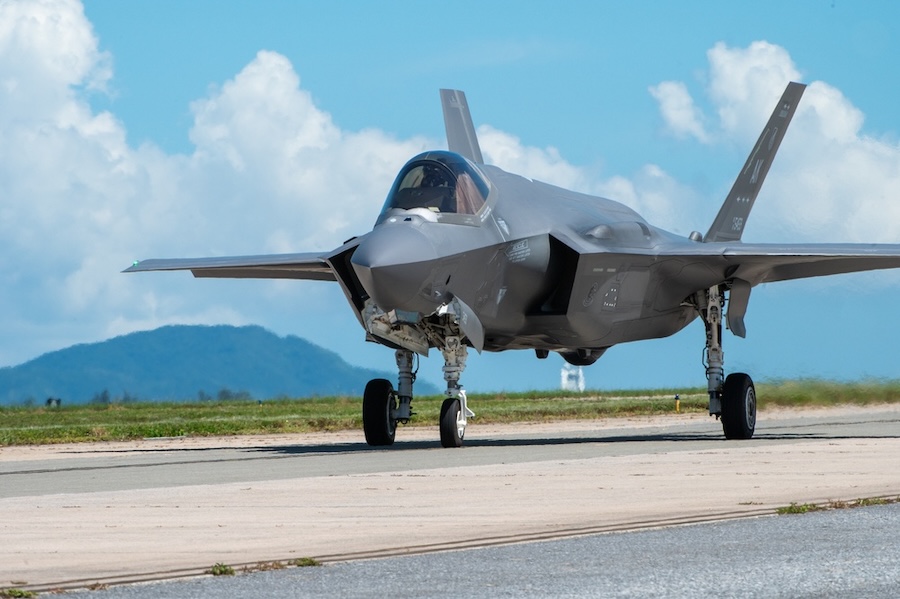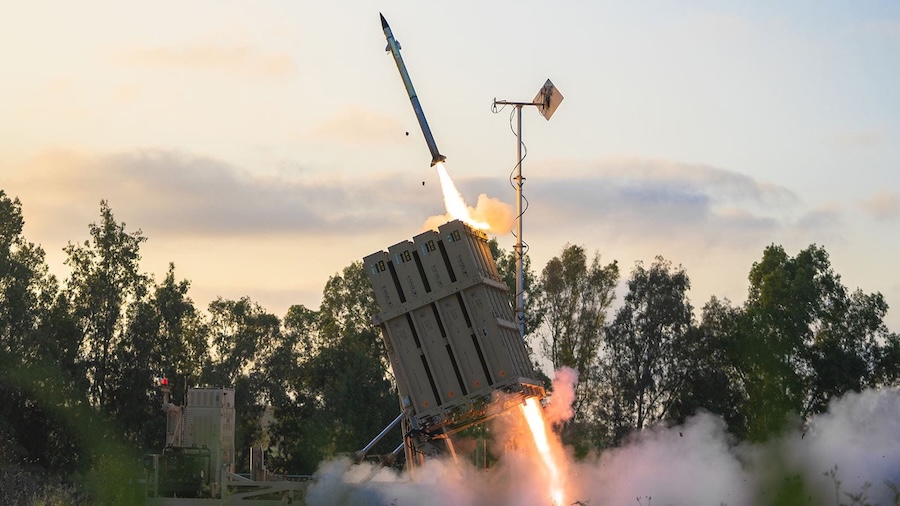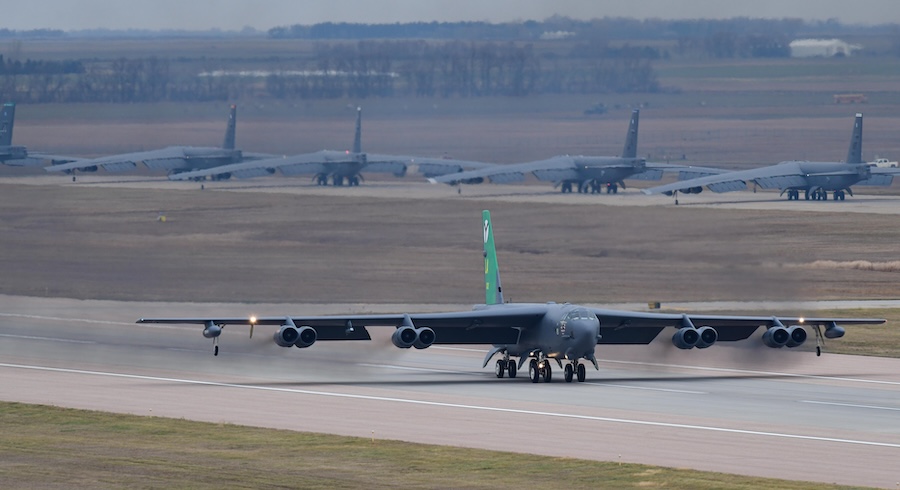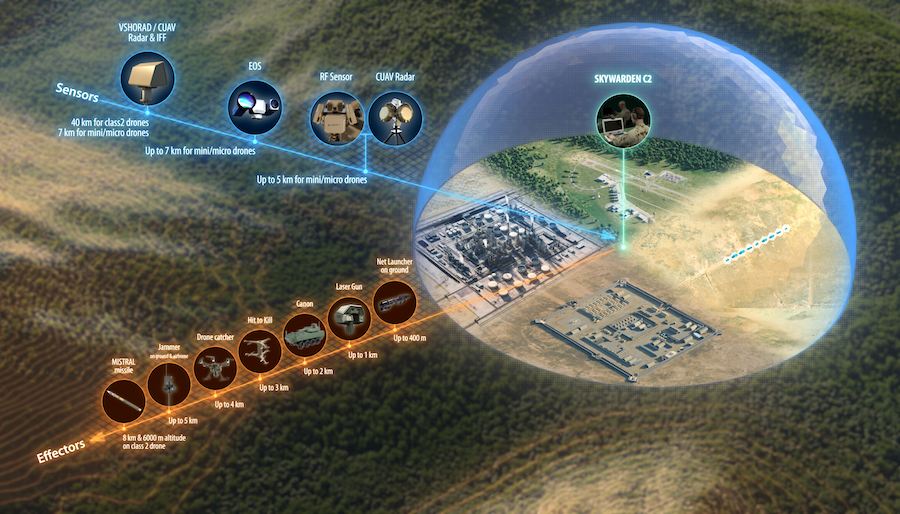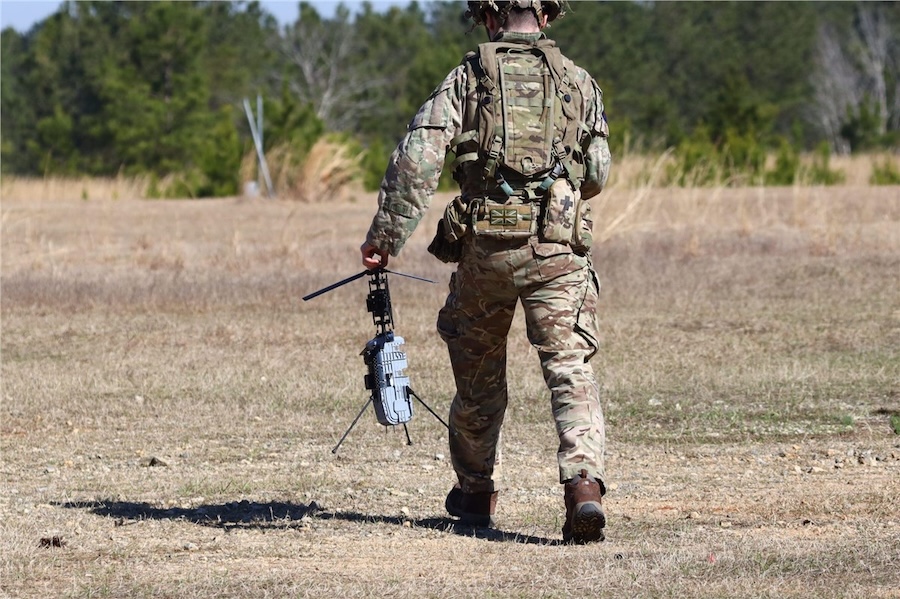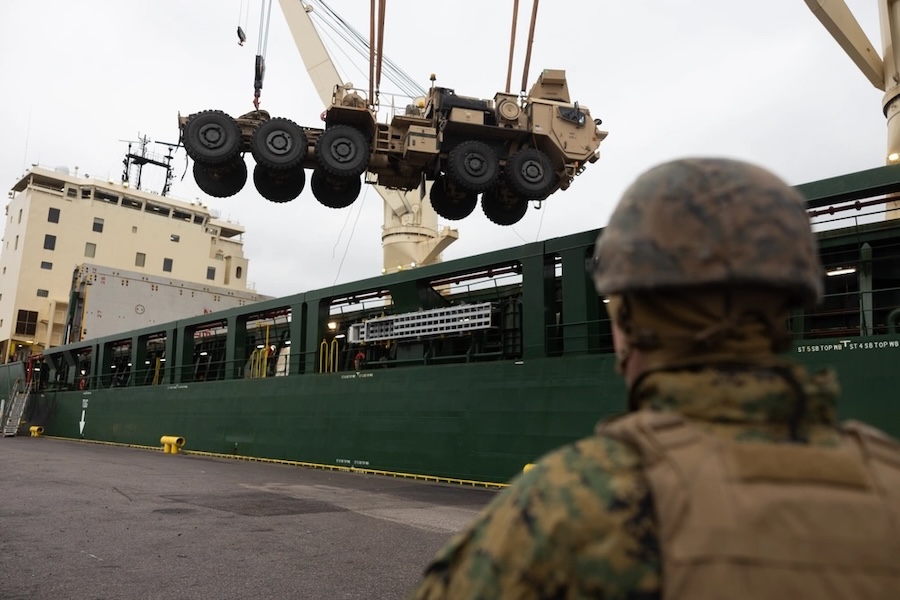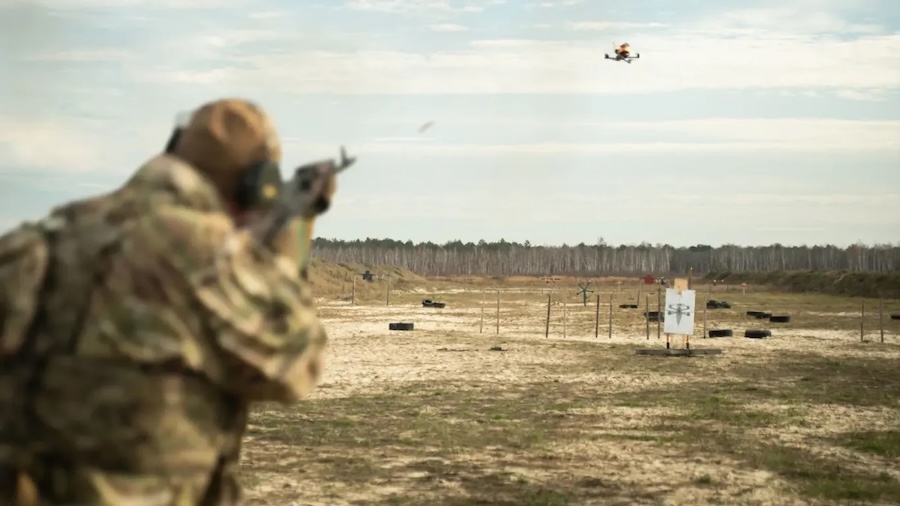Maj. Gen. Clair Gill, commanding general of the Army Aviation Center of Excellence (AVCOE) and Fort Rucker, emphasised the importance of innovation and adaptability. “This is about taking a capability and giving it to the Soldiers and letting them innovate… that’s how all the best ideas happen,” Gill said. “Gone are the days where it requires exquisite piloting to operate (a UAS).”
The summit featured briefings on allied use of drones in combat, updates on counter-UAS systems and lessons drawn from current conflicts. “Much as the rest of the world watched us during the Global War on Terror to learn what we were doing, now we’re looking at Ukraine,” Gill said.
Live demonstrations were conducted on 13 August at Fort Rucker’s ranges, showcasing drones equipped with bomb and grenade dropping systems, shotguns, grenade launchers and other payloads. First-person-view drones also destroyed moving vehicles and intercepted other drones mid-flight. “This was the opportunity to see the art of the possible… and the best of industry, and to take that across the street and put it in the hands of the Soldiers was great,” Gill said.
Commanders at brigade level and below will soon have access to a secure online storefront to purchase drones for experimentation, training and operational use. “We want to give the commanders a lot of risk authority; let the commanders fly these systems in their area,” said Col. Nicholas Ryan, director for the Army Capabilities Manager – UAS.
Fort Rucker is hosting the Army’s first lethal operator course, which trains Soldiers in the use of armed small drones. “Almost every division and [Army National Guard and Special Operations Command] has folks here at our course, and they are going to leave here as lethal operators that can go back out and train their units,” Gill said.
The course is being developed with the aim of becoming a standardised programme similar to Air Assault School, allowing expansion to other installations. “The idea is that we can export it,” Gill said. “So now we’re running Air Assault School; we’ve got a standardized block of instruction, here’s what you need, here’s the equipment you have to buy, here’s the ranges, capabilities, and limitations you’re going to have, here’s the prerequisites to bring people in, and what you’re going to train them on. So you’ll see that lethal operator course probably at the Fires Center, the Maneuver Center, and probably anywhere else (the Army) thinks it’s appropriate.”
Ryan said Fort Rucker’s combination of expertise, airspace and approvals makes it well positioned to support UAS development. “We have the experts here, we have (U.S. Army Combat Capabilities Development Command) here, and now we have the range and approvals to do it. So our intent, working with industry, is: use us, come to (Fort Rucker) as a location and a site if you want to test out a new drone or a new capability, or something lethal. Come to us, we’ve got the airspace, we’ve got the range, and we’ve got the people here,” he said.
Col. Joshua Ruisanchez, director of the Army Aviation Capabilities and Integration Directorate, called for continued Army-industry collaboration. “When you think ‘who’s moving fast?’ well that’s definitely industry. So let’s keep that going,” he said.
Ruisanchez outlined priorities for the next six months, including AI integration, a universal drone controller, and further refinement of drone designs. “The Maneuver Center will ensure that every Soldier touches the drone… and they get the training that’s needed to be able to operate,” he said. “We see this almost like a basic training task like chemical gear. How do you protect yourself against a drone, and how do you employ the drone.”
Gill confirmed that AVCOE will act as the central proponent for UAS, ensuring unified fielding, training and operational integration. “It needs to be centralized, one proponent to bring it all in and push it all out… one ‘who do you need to talk to,’” he said.
As the summit concluded, Gill thanked participants for their contributions and urged sustained progress. “I think the word got out, and thanks to everyone working the summit,” he said.



